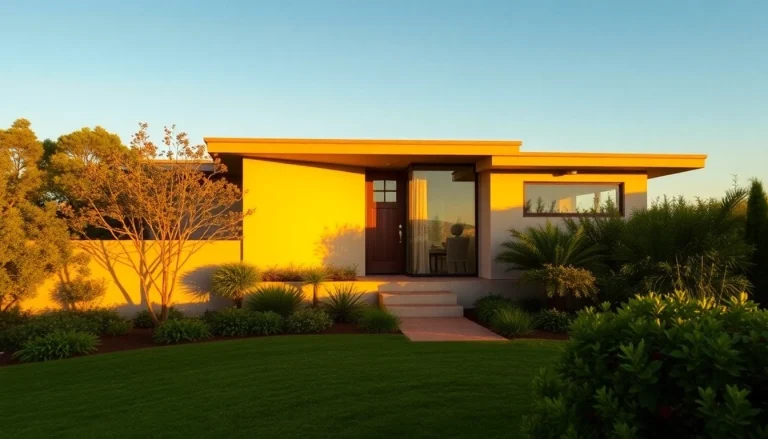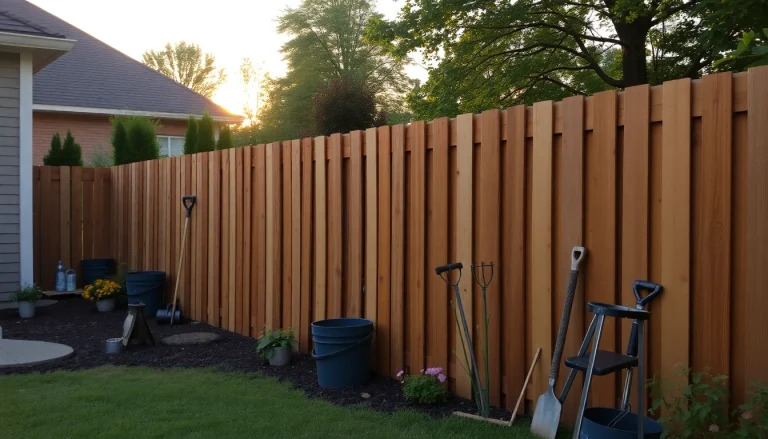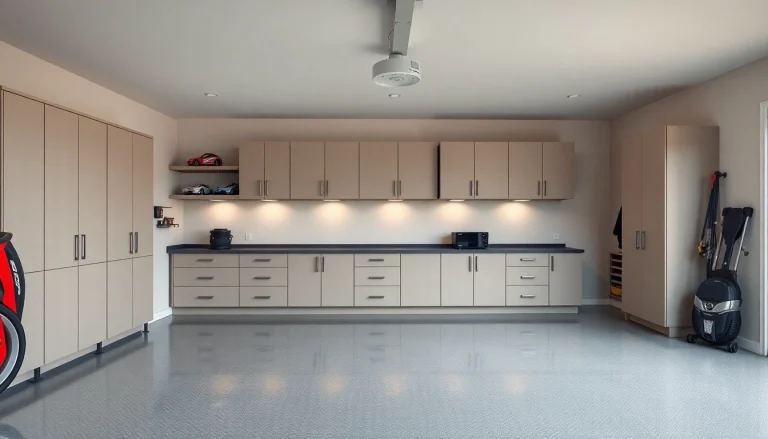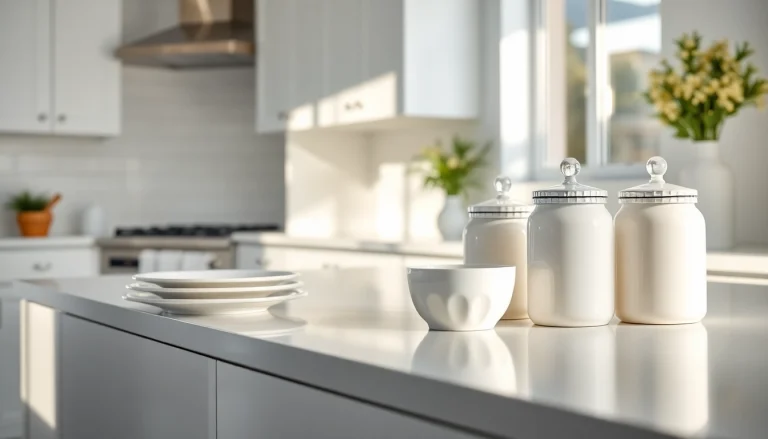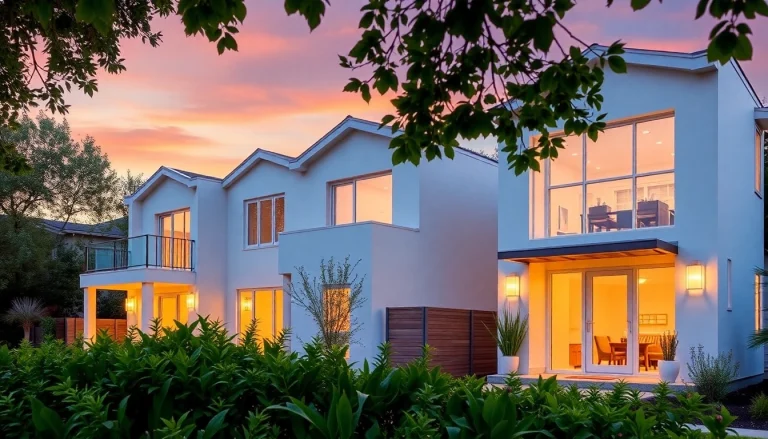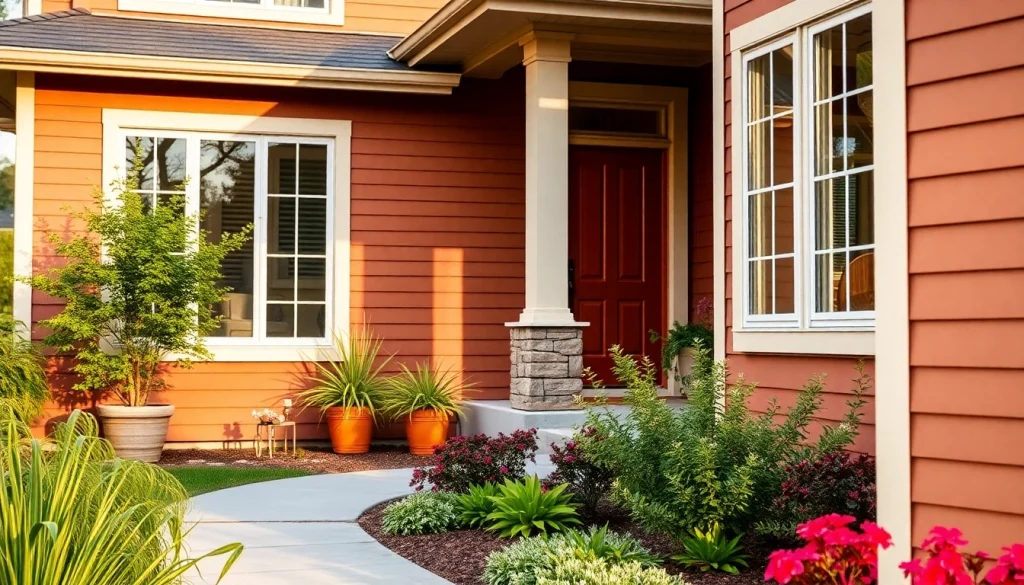
Understanding the Importance of Exterior Renovations
In the home renovation landscape, exterior renovations stand as one of the most significant elements in optimizing your property’s potential. They not only enhance the visual appeal of a home but also play a crucial role in increasing its overall value and longevity. As homeowners increasingly prioritize sustainable living, energy efficiency and aesthetic upgrades are becoming paramount in renovations. From siding replacements to landscaping, this article delves into the multifaceted benefits of undertaking exterior renovations.
Boosting Property Value
One of the most compelling reasons for investing in exterior renovations is the potential for significantly boosting property value. According to various property valuation studies, curb appeal can account for 10% or more of a home’s sale price. Renovations such as a new roof, modern siding, or enhanced landscaping not only attract potential buyers but also justify higher asking prices.
For instance, a homeowner who invests in high-quality siding can see a return on investment (ROI) surpassing 70%. Renovations that enhance a home’s energy efficiency, like new windows or insulation, offer not only future savings on utility bills but often elevate market value. Thus, exterior renovations can serve as a strategic investment, recouping costs upon property sale.
Enhancing Aesthetic Appeal
The visual impact of your home’s exterior is vital in creating a lasting first impression. Enhancements such as fresh paint, updated doors, and landscape modifications can completely transform a space. By aligning renovation choices with current design trends—such as neutral color palettes and minimalistic designs—you can ensure your property stands out in a competitive market.
Moreover, incorporating landscaping elements such as flower beds, walkways, and outdoor lighting can significantly enhance the aesthetic appeal, making your home more inviting. These details, while seemingly small, contribute to an overall beautiful exterior which can increase community positivity and pride.
Improving Energy Efficiency
Modern exterior renovations also focus on improving a home’s energy efficiency, aligning with a global emphasis on sustainability. By upgrading to energy-efficient windows, investing in proper insulation, and replacing old roofing with reflective materials, homeowners can significantly reduce their carbon footprint while lowering utility bills.
In fact, the U.S. Department of Energy states that window replacement can save homeowners up to 15% on their energy bills. Similarly, a high-quality roof can improve HVAC efficiency by up to 50%. As energy efficiency becomes increasingly prioritized, homes with these upgrades will not only perform better in the market but also appeal to eco-conscious buyers.
Key Aspects to Consider in Exterior Renovations
Choosing the Right Materials
Material selection is critical in the planning phase of any exterior renovation. Quality materials do not only contribute aesthetically but also ensure durability against environmental factors. For instance, opting for vinyl siding or composite decking can offer long-lasting solutions that require less maintenance compared to wood.
Homeowners should evaluate local climate conditions when selecting materials. In areas with intense sun, materials like wood may warp faster, while metal roofs may perform poorly in areas with heavy hail or snowfall.
Consulting with professionals can provide insight into the most suitable materials for specific renovations, thus ensuring a balance between aesthetic preferences and practical resilience.
Hiring Reliable Contractors
Another essential component of successful exterior renovations is hiring a trustworthy contractor. Conduct thorough research, seek referrals, and read reviews. A reliable contractor will not only deliver quality work but will also offer warranties for their services, ensuring peace of mind post-renovation.
It’s advisable to obtain multiple quotes, but don’t necessarily choose the lowest bidder. Instead, consider factors such as experience and project approach. Personal recommendations can provide valuable insights into a contractor’s reliability and craftsmanship.
Planning for Local Weather Conditions
Every location has its own weather patterns, and your exterior renovations should consider these factors. For example, coastal areas may require materials that resist salt corrosion, while homes in snowy regions might need roofs designed to withstand heavy loads.
Additionally, timing plays a crucial role in renovations; certain materials should be applied during specific weather conditions to ensure proper adherence and performance. Working with a contractor familiar with local weather can help mitigate potential future problems.
Common Types of Exterior Renovations
Siding Replacement
Siding serves as a protective barrier against the elements, and deterioration over time can lead to structural issues. Replacing old siding not only enhances a home’s look but also improves insulation and can increase energy efficiency. Homeowners can choose from materials like vinyl, wood, fiber cement, or stucco, each offering unique advantages.
Considerations in choosing siding include durability, maintenance requirements, and overall cost. For example, while wood may provide a classic aesthetic, it requires more upkeep than vinyl, which can last longer with less maintenance.
Window and Door Upgrades
Upgrading windows and doors can dramatically enhance both curb appeal and energy consumption. Modern windows often incorporate energy-efficient glass, reducing heating costs in winter and cooling costs in summer. Custom doors can also serve as an immediate focal point for the facade.
When selecting new windows or doors, look for Energy Star ratings, which indicate superior efficiency levels. Additionally, consider the frame materials; options include wood, vinyl, and fiberglass—all presenting their own set of pros and cons in terms of insulation, maintenance, and aesthetics.
Roofing Improvements
Roofing is another critical element of exterior renovations. Whether replacing an aging roof or upgrading to materials with better longevity and efficiency, this project can provide an impressive ROI. Popular choices include asphalt shingles, metal roofing, and slate, each offering various aesthetic and practical benefits.
Beyond aesthetics, roofing affects the energy efficiency of a home. High-albedo roofing materials, designed to reflect more sunlight, can reduce cooling costs significantly. It’s advisable to consult with a roofing specialist to determine the best option for your climate and budget.
Cost Analysis of Exterior Renovations
Budgeting for Your Project
Budgeting is a critical aspect of planning your exterior renovations. Homeowners should start by establishing a realistic budget based on estimates of materials and labor. A common rule is to allocate around 10% of the property value for renovations, allowing for flexibility amidst unforeseen expenses.
It’s also crucial to account for additional costs, such as permits and potential need for repairs. Collaborating with contractors during this phase can provide a comprehensive understanding of what the overall project will entail financially, helping to set attainable goals.
Average Costs and Financial Considerations
The costs associated with exterior renovations can vary widely depending on the type of renovation, the materials used, and even regional factors. For instance, siding replacement can range from $5,000 to over $15,000, while window upgrades can cost anywhere from $300 to $1,200 per window. Understanding these financial implications can help homeowners make informed decisions.
Additionally, exploring financing options through home equity loans or renovation-specific loans can alleviate financial pressure. It’s also helpful to research local and national programs that provide incentives for energy-efficient renovations, which can offset total renovation costs.
Cost-Effective Renovation Ideas
If a full-scale renovation isn’t feasible due to budget constraints, homeowners can still achieve significant improvements through budget-friendly upgrades. Options might include repainting front doors, adding outdoor lighting, landscaping with native plants, or even simple maintenance tasks like power washing siding.
DIY projects can provide substantial savings. For example, homeowners can undertake minor landscaping or painting projects themselves—tasks that require more effort than financial investment. Focus on areas that offer the highest return on investment, ensuring that even small changes can make a notable impact.
Best Practices for Successful Exterior Renovations
Focusing on Design Cohesion
Design cohesion ensures that all aspects of a renovation complement each other, enhancing the overall aesthetic rather than detracting from it. When planning exterior renovations, consider how colors, materials, and styles work in harmony. Consult with design professionals or utilize online design tools to visualize these aspects before committing to purchases.
Moreover, maintaining architectural integrity is essential; renovations should align with the original structure’s style, ensuring that upgrades feel organic rather than forced. Well-thought-out design choices improve visual appeal and create a welcoming atmosphere that fosters community pride.
Choosing Energy Efficient Solutions
Energy-efficient solutions are at the forefront of modern renovations. Selecting materials and appliances that conserve energy is not only beneficial for the environment but also translates to long-term savings for homeowners. High-efficiency windows, ENERGY STAR appliances, and solar panel installations are key components of a sustainable renovation strategy.
Additionally, investing in smart technologies—like programmable thermostats and outdoor lighting timers—can streamline energy consumption further and provide homeowners with useful data on their energy usage patterns.
Monitoring the Renovation Process
Finally, active involvement throughout the renovation process is vital for ensuring that everything unfolds as planned. Regular communication with contractors, site visits, and keeping track of expenditures are essential steps. This vigilance provides opportunities to catch any discrepancies early on, allowing for timely resolutions and minimizing the risk of exceeding the budget.
Moreover, utilizing project management tools or software can streamline communication and documentation, making coordination efficient and enhancing project outcomes.
